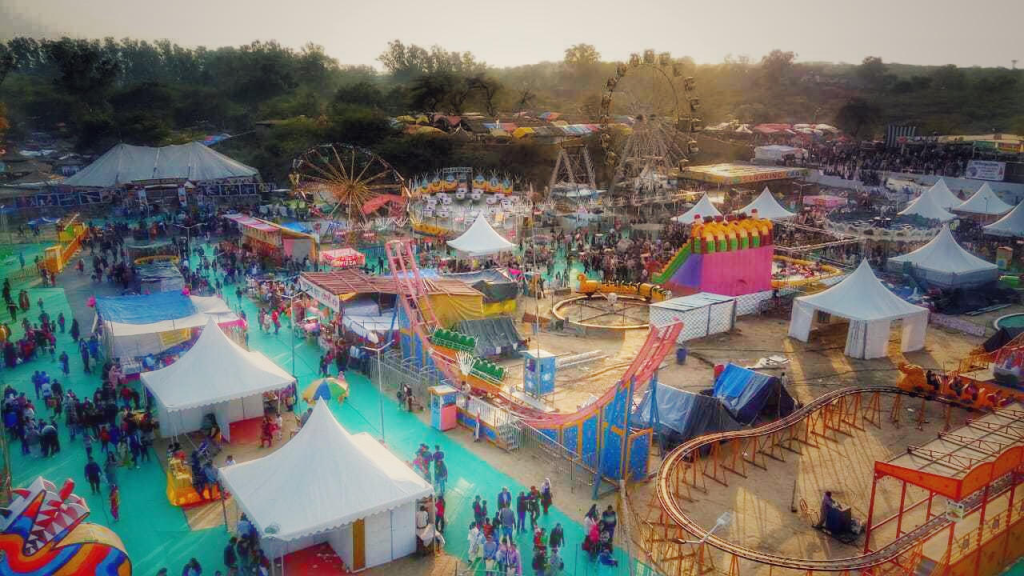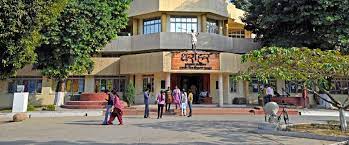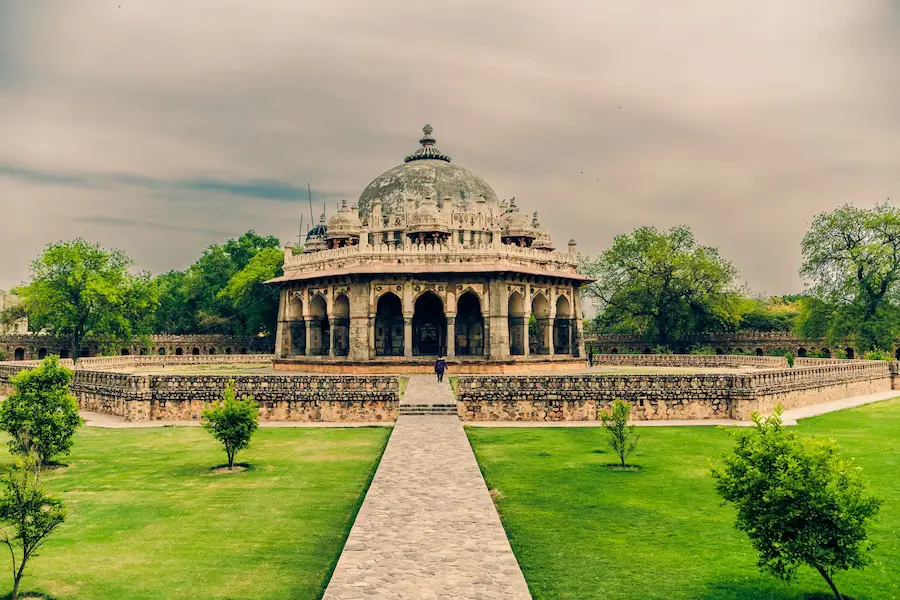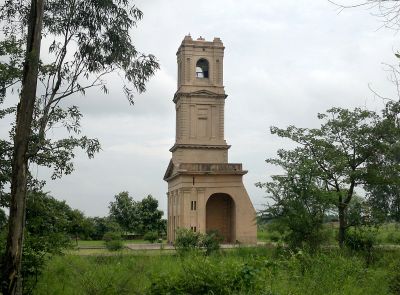Browse Items (153 total)
Sort by:
-
Bajra roti
A gluten-free flatbread made from pearl millet, typically served with vegetables or curry. Traditional flatbread made from pearl millet. A hearty millet-based bread enjoyed with curries. Served alongside almost any curry in Haryana
-
Babu Balmukund Gupta
○ Considered the father of Hindi satirical journalism, Babu Bal Mukund Gupta was born in Gudiyani, Rewari, in 1865.
○ Nicknames: Babu Ji, the messiah of Hindi journalism, the father of prose. He was a distinguished writer and a leading journalist.
○ Major works: Shivshambhu ke Chihe (leers) versus Lord Curzon, leers and essays, Khel Tamasha.
○ Babu Bal Mukund Gupta's Shivshambhu ke Chihe satirized the policies of Lord Curzon, comparing his actions to those of Nadir Shah.
○ Babu Bal Mukund Gupta edited several newspapers, including: ■ Hindi newspapers: Hind-Bangvasi, Hindustan, Bharat Pratap, Bharat Mitra (1899-1907)
■ Urdu newspapers: Kohinoor (1889), Akhbar-e-Chunar (1886), Mathura, Jamna
○ The Haryana Sahitya Academy in Panchkula presents the Babu Bal Mukund Gupta Samman, which includes a ₹2.5 lakh honorarium, to individuals who make signicant contributions to Hindi literature.
○ Statues of Babu Bal Mukund Gupta and two other eminent Hindi literary gures, Sant Surdas and Pandit Lakhmichand, have been erected on the premises of the Haryana Sahitya Academy, Panchkula.
○ A Babu Bal Mukund Gupta Chair has been established at Indira Gandhi
University, Meerpur, Rewari.
○ Babu Bal Mukund Gupta engaged in a prolonged debate with Mahavir Prasad Dwivedi regarding the correctness of the word "instability".
○ He died in 1907. Upon his death, Mahavir Prasad Dwivedi wrote, "Only one person used to write good Hindi." -
Kalpana Chawla
The first Indian woman to occupy space was Kalpana Chawla! In 192, Kalpana was born in Karnal, Haryana. In aeronautical engineering, she had earned a Master of Science degree from the University of Texas. applied to the University of Colorado Boulder for a PhD following that. As a mission specialist in the Space Shuttle Columbia, she made her maiden spaceflight in 1997. She and her six crew members, however, died upon re-entering Earth on her second voyage in 2003. -
Shahjahan ki Baoli
This baoli is possibly the finest and the best such monument preserved in Haryana. According to an inscription on the well, it was built by Saidu Kala, a chobdar in the service of Emperor Shah Jahan, in 1658-59 AD. It is an elaborate structure of bricks and kankar blocks, has 101 steps extending in three stages, separated by landings and leading to the water reservoir. The circular well is located at the end of the stairs.
-
Neeraj Chopra
Subedar Major Neeraj Chopra, PVSM, VSM (born 24 December 1997) is a celebrated Indian track and field athlete, widely regarded as the greatest javelin thrower in India's history. He is a double medalist at the Olympics, World Championships, and the Asian Games, and has also clinched a title in the Diamond League.
Chopra made history by winning gold at the 2020 Tokyo Olympics, becoming the first Asian athlete ever to achieve this feat in javelin throw. In 2023, he added another milestone by becoming the first Asian to win gold in javelin at the World Athletics Championships. Known for his consistent excellence, Chopra has claimed gold medals in every major international tournament and has maintained a podium streak in 24 consecutive competitions since 2020.
His rise began with a standout performance at the 2016 World U20 Championships, where he set a junior world record in javelin throw — a record that still stands today. -
Rakhigarhi
Rakhigarhi (also spelled Rakhi Garhi) is a village and prominent archaeological site located in the Hisar district of Haryana, northern India, approximately 150 kilometers northwest of Delhi. Situated on the Ghaggar River plain, about 27 kilometers from the seasonal Ghaggar River, Rakhigarhi is one of the most significant sites of the Indus Valley Civilisation. It exhibits evidence of continuous settlement across the pre-Harappan period (circa 6000?/4600–3300 BCE), the early Harappan phase (3300–2600 BCE), and the mature Harappan phase (2600–1900 BCE). -
Asthal Bohar
Asthal Bohar is stuated 6 to 7 kms. east of Rohtak city on Rohtak-Delhi N.H. 10, the place is known for its math and ancient finds like sculptured stone idols. After being neglected, the math was revived in 1791, when Baba Mast Nath came here. Now there is an Ayurvedic degree college, free hospital, Business Management Institute, engineering college and other institutions being run by the math. -
Madhogarh Fort
Madhogarh Fort is perched atop Madhogarh Hill, part of the Aravalli mountain range, near the village of Madhogarh in Mahendragarh district, Haryana, India. The fort is situated approximately 12 kilometers from Satnali Chowk in Mahendragarh, along State Highway 27 (Mahendragarh–Satnali–Loharu route).
The nearby Madhogarh village also attracts visitors with its collection of historic havelis, showcasing vernacular Hindu architecture influenced by the ornate Shekhawati style, making it a site of both architectural and cultural interest. -
Bhirrana
Bhirrana (also spelled Bhirdana or Birhana, IAST: Bhirḍāna) is an important archaeological site located in a small village in the Fatehabad district of Haryana, northern India. Excavations at Bhirrana revealed charcoal samples from its earliest layers, some dating back to the 8th–7th millennium BCE, making them older than the Indus Valley Civilization. Interestingly, these samples were found alongside Hakra Ware pottery, which is typically dated to the 4th millennium BCE at other sites. Additional charcoal remains from early layers have been dated to 3200–2600 BCE, and discoveries of smelted copper artefacts point to a Chalcolithic rather than Neolithic cultural phase.
The site lies along the seasonal Ghaggar River, which Archaeological Survey of India (ASI) experts identify as the post-Indus Valley Civilisation course of the Rigvedic Saraswati River, dated to around 1500 BCE. -
Asigarh Fort
Asigarh Fort, also known as Hansi Fort, is situated on the eastern bank of the Amti Lake in Hansi city, Haryana, approximately 135 km from Delhi along National Highway 9 (NH9). Covering an area of around 30 acres, the fort once held strategic command over 80 surrounding forts during its peak. Renowned as one of the most formidable forts in ancient India, it was designated a centrally protected monument by the Archaeological Survey of India (ASI) in 1937.

















